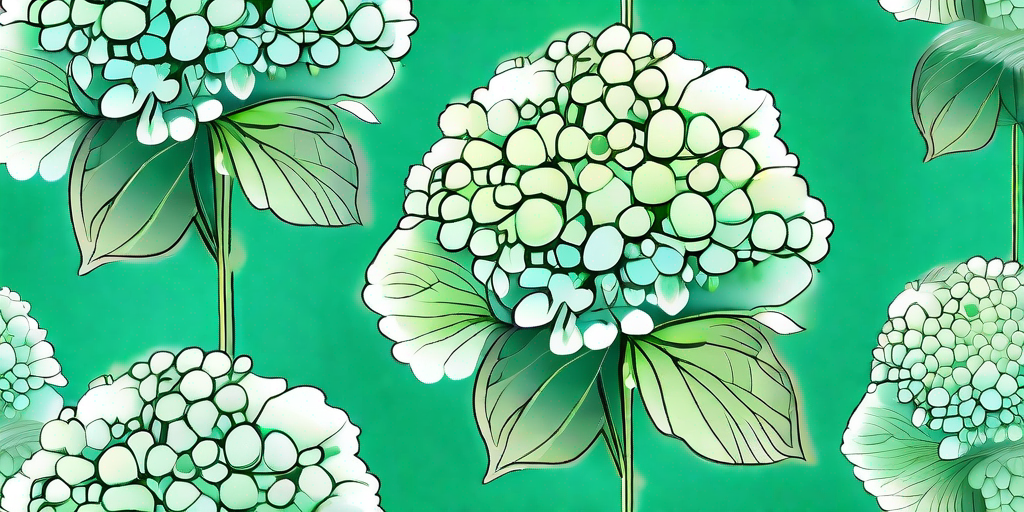
Welcome, fellow green thumbs and flower enthusiasts! Today, we're diving headfirst into the world of mophead hydrangeas, those fluffy, fabulous plants that can turn any garden into a riot of color. Whether you're a seasoned gardener or a budding horticulturist, we've got the dirt on how to grow these beauties. So, grab your gardening gloves, and let's get started!
The Basics of Mophead Hydrangeas
Before we start, let's get to know our subject a little better. Mophead hydrangeas, also known as Hydrangea macrophylla, are the show-offs of the hydrangea family. With their large, round flower heads, they're like the cheerleaders of your garden, always ready to put on a show.
Native to Japan, these plants are deciduous shrubs that can grow up to 2 meters tall. They're known for their large, serrated leaves and their stunning flowers that bloom in the summer. The flowers come in a variety of colors, from pink to blue, depending on the soil's acidity.
Why Choose Mophead Hydrangeas?
Well, aside from their obvious beauty, mophead hydrangeas are also incredibly versatile. They can be used as a standalone feature in your garden, or they can be combined with other plants to create a stunning display. Plus, they're relatively easy to care for, making them a great choice for both novice and experienced gardeners.
And let's not forget about their ability to change color. Yes, you read that right. Depending on the pH level of your soil, your hydrangeas can change from pink to blue or vice versa. It's like having a mood ring in your garden!
How to Grow Mophead Hydrangeas
Now that we've covered the basics, let's get down to the nitty-gritty: how to grow these fabulous plants. Don't worry, we'll guide you through every step of the process, from planting to pruning.
Choosing the Right Location
First things first, you need to find the perfect spot for your hydrangeas. These plants prefer partial shade, so choose a location that gets morning sun and afternoon shade. They also need well-drained soil, so avoid areas where water tends to pool.
As for the soil, mophead hydrangeas prefer slightly acidic soil with a pH level of 5.5 to 6.5. If your soil is too alkaline, your hydrangeas may turn pink. If it's too acidic, they may turn blue. But hey, that's part of the fun, right?
Planting Your Hydrangeas
Once you've found the perfect spot, it's time to plant your hydrangeas. Dig a hole that's twice as wide and just as deep as the root ball. Place the plant in the hole, making sure the top of the root ball is level with the ground. Then, fill in the hole with soil, firming it gently around the base of the plant.
After planting, give your hydrangeas a good watering. They like to stay moist, but not too wet, so make sure the soil is well-drained. And remember, it's better to water deeply and less frequently than to water lightly and often.
Caring for Your Mophead Hydrangeas
Now that your hydrangeas are in the ground, it's time to take care of them. With the right care, your plants can bloom for many years to come.
Watering and Fertilizing
As we mentioned earlier, mophead hydrangeas like to stay moist. During the growing season, they may need to be watered several times a week, especially if the weather is hot and dry. However, be careful not to overwater, as this can lead to root rot.
In terms of fertilizing, a slow-release fertilizer applied in the spring and again in mid-summer should do the trick. Just make sure not to overdo it, as too much fertilizer can lead to leafy growth at the expense of flowers.
Pruning Your Hydrangeas
Pruning is an important part of caring for your hydrangeas. It helps to keep the plant healthy and encourages more blooms. The best time to prune is in late winter or early spring, before the new growth starts.
When pruning, cut back the oldest stems to ground level to encourage new growth. Also, remove any dead or damaged wood. But be careful not to over-prune, as this can reduce the number of flowers.
FAQs About Mophead Hydrangeas
Still got questions? Don't worry, we've got answers. Here are some of the most frequently asked questions about mophead hydrangeas.
Why are my hydrangeas not blooming?
There could be several reasons why your hydrangeas are not blooming. It could be due to a lack of sunlight, over-fertilizing, or improper pruning. Make sure your plants are getting enough light, not too much fertilizer, and that you're pruning at the right time of year.
Can I change the color of my hydrangeas?
Yes, you can! The color of mophead hydrangeas is determined by the pH level of the soil. If you want blue flowers, you'll need acidic soil. If you want pink flowers, you'll need alkaline soil. You can adjust the pH level by adding sulfur to make the soil more acidic or lime to make it more alkaline.
How often should I water my hydrangeas?
During the growing season, you may need to water your hydrangeas several times a week, especially if the weather is hot and dry. However, it's better to water deeply and less frequently than to water lightly and often.
Conclusion
And there you have it, the secret to growing gorgeous mophead hydrangeas. With the right care and attention, these fluffy and fabulous plants can be the star of your garden. So, what are you waiting for? It's time to get planting!
Remember, gardening is all about patience and perseverance. So, even if your hydrangeas don't bloom right away, don't give up. Keep watering, keep fertilizing, and keep pruning. Your efforts will be rewarded with stunning blooms that will make your garden the envy of the neighborhood.















